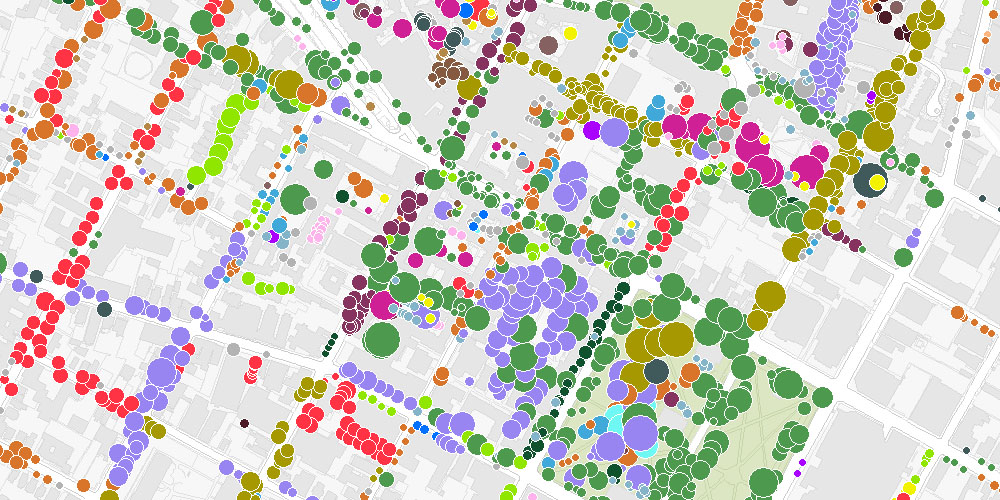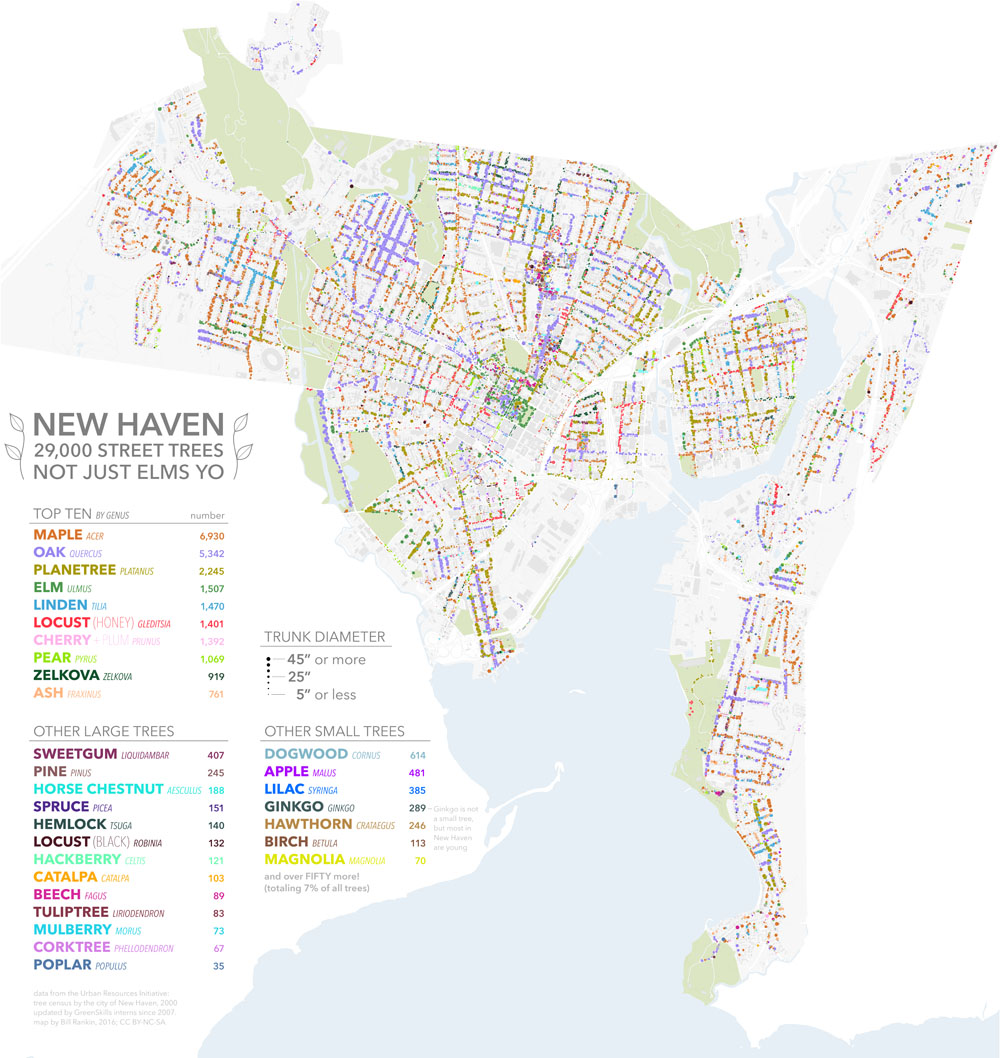
Bill Rankin, 2016
download:
.PNG (10000x10000, 6 MB)
Although New Haven is still known as "Elm City" — after the many elms planted in the late 18th and early 19th century by James Hillhouse — most of its namesake trees were killed by Dutch elm disease in the 1930s and 1940s. The Green, Yale, and Elm Street have been replanted with disease-resistant hybrids, but elsewhere only a few scattered elms remain.
The main pattern today is streets planted with a single type of tree, and the city as a whole is an intricate weave of oak, maple, planetree, linden, ash, and honey locust. There are also isolated blocks of cherry, pear, sweetgum, and other non-native species. But the most recent wave of planting has moved away from single-species streets, and instead holes are being filled with a variety of new alternatives, mostly from east Asia. The Japanese keyaki (Zelkova serrata) serves as an elm-like reminder of what was lost, and the Japanese pagoda tree, Amur maackia, Amur corktree, Japanese lilac, paperbark maple, and ginkgo dot the streets at random.
After the elms disappeared, one of the most popular replacements was the Norway maple. But these trees have not been as long-lasting or robust as hoped, and soon New Haven is due for another rapid change in its treescape.
Data from the Urban Resources Initiative.

